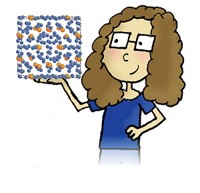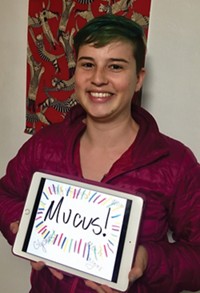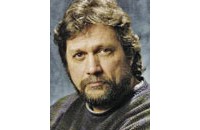Advertisement
Grab your lab coat. Let's get started
Welcome!
Welcome!
Create an account below to get 6 C&EN articles per month, receive newsletters and more - all free.
It seems this is your first time logging in online. Please enter the following information to continue.
As an ACS member you automatically get access to this site. All we need is few more details to create your reading experience.
Not you? Sign in with a different account.
Not you? Sign in with a different account.
ERROR 1
ERROR 1
ERROR 2
ERROR 2
ERROR 2
ERROR 2
ERROR 2
Password and Confirm password must match.
If you have an ACS member number, please enter it here so we can link this account to your membership. (optional)
ERROR 2
ACS values your privacy. By submitting your information, you are gaining access to C&EN and subscribing to our weekly newsletter. We use the information you provide to make your reading experience better, and we will never sell your data to third party members.
Biological Chemistry
Movers And Shakers
Penny Chisholm
MIT biologist discusses the benefits of public outreach
by Craig Bettenhausen
February 27, 2012
| A version of this story appeared in
Volume 90, Issue 9
Prochlorococcus is the smallest cell on the planet that can harvest energy directly from the sun. This tiny marine cyanobacterium, less than 1 μm across, represents a huge portion of the ocean biomass; an estimated 1027 of them roam the oceans. Yet scientists were unaware of Prochlorococcus until 1985, when Massachusetts Institute of Technology biologist Sallie W. (Penny) Chisholm and colleagues from Woods Hole Oceanographic Institution spotted a chlorophyll fluorescence coming from a tiny cell careening through the capillary tube of their flow cytometry apparatus. The discovery begat a sea change in the understanding of the ocean’s food web.
In addition to its outsized role in the ecosystem, Prochlorococcus also has the smallest genome of any O2-evolving organism, at around 2,000 genes. The portion that codes for the photosynthetic machinery—1,200 genes that are conserved across the many different strains—composes the most succinct genetic picture of photosynthesis available. But even 26 years after the discovery of Prochlorococcus, though the organisms “contribute a significant fraction of global photosynthesis,” Chisholm laments, “nobody knows about them.”
Chisholm perceives a gap in the public’s scientific literacy surrounding photosynthesis, which frustrates her because the process is so central to life. She points to a 1997 video produced by the Harvard-Smithsonian Center for Astrophysics, in which freshly minted Harvard University and MIT graduates are handed a seed and a log and asked where the mass of a tree comes from. The students offer water and nutrients drawn from the soil as candidates and are incredulous when presented with the idea that the vast majority of the mass is derived from CO2 in the air.
The general public “doesn’t understand photosynthesis, and they should,” Chisholm recalls venting to her friend Molly Bang, a children’s book author, in 2001. A few years later, Bang was looking for another science topic to follow up on her 2004 book “My Light,” which teaches children about electricity and introduces the idea that it ultimately comes from the sun. In 2005 Chisholm and Bang began work on what would become their 2009 collaboration “Living Sunlight: How Plants Bring the Earth to Life.” It is solidly a children’s book, but kids are far from the only targeted audience. “Most adults aren’t going to buy a book about photosynthesis for themselves,” Chisholm tells C&EN, “but they might buy one for their children and read it to them.”
In “Living Sunlight” Chisholm and Bang focus on photosynthesis on land, writing at a kindergarten to fifth-grade reading level about how plants absorb the sun’s rays and use that energy to convert water and CO2 into glucose, which then feeds the rest of the food web. The colorful illustrations and simple text are supplemented with an appendix that is more substantial than those found in most children’s books. The pair teamed up for another book, titled “Ocean Sunlight: How Tiny Plants Feed the Seas,” that is slated to come out in May.
The upcoming work opens by reminding readers about land plants and then asks: If life on land depends on plants and there’s all this life in the sea, where are the plants of the sea? “ ‘Ocean Sunlight’ has been the hardest thing I’ve ever done,” Chisholm says. The hardest bit was boiling her life’s work down to its essence and not letting other details sneak in. But given Chisholm’s enthusiasm for the research, she found it hard to leave the details out. In “Ocean Sunlight,” for example, Chisholm and Bang talk about bottom-up population control, the idea that the availabilities of nitrogen and phosphorus limit the growth of phytoplankton like Prochloroccus. However, top-down control, wherein predation limits populations, is mentioned only in passing. It’s complex, Chisholm says. “We’re trying to teach systems dynamics to six year olds.”
Writing children’s books has forced Chisholm to set priorities and think holistically about how her work fits in a larger context. In much the same way, teaching undergraduate classes has helped Chisholm develop a vision for her research and a compelling way to explain its importance to scientists and laypeople alike.
That broader perspective has an impact in the lab. “Thinking about the big picture,” Chisholm argues, “has become a great asset for my research. It helps me identify the fundamentally important questions—it provides a compass for our work.” Communicating with the general public pays dividends in that process, she says, and collaborating with Bang on “Living Sunlight” and “Ocean Sunlight” has been an extension of that.
Because of the books, she is invited to speak at a wide range of events. For example, she gives regular talks on the MIT alumni lecture circuit, and she speaks to MIT’s Knight Science Journalism program each year. “Anytime you’re invited to do a talk for a general audience, go for it; there is no better way” to get down to the core of a scientific problem, she says.
“At most universities, there are more opportunities for outreach than there is faculty interest or time,” Chisholm notes. To her, however, outreach to the general public should be a priority for scientists, right alongside the demands of research, funding, and management. “I’ve been enjoying the taxpayers’ dollars for 35 years, having all this fun in the lab, so I feel it’s really important that I make every effort I can for them to understand what we learn.”






Join the conversation
Contact the reporter
Submit a Letter to the Editor for publication
Engage with us on Twitter